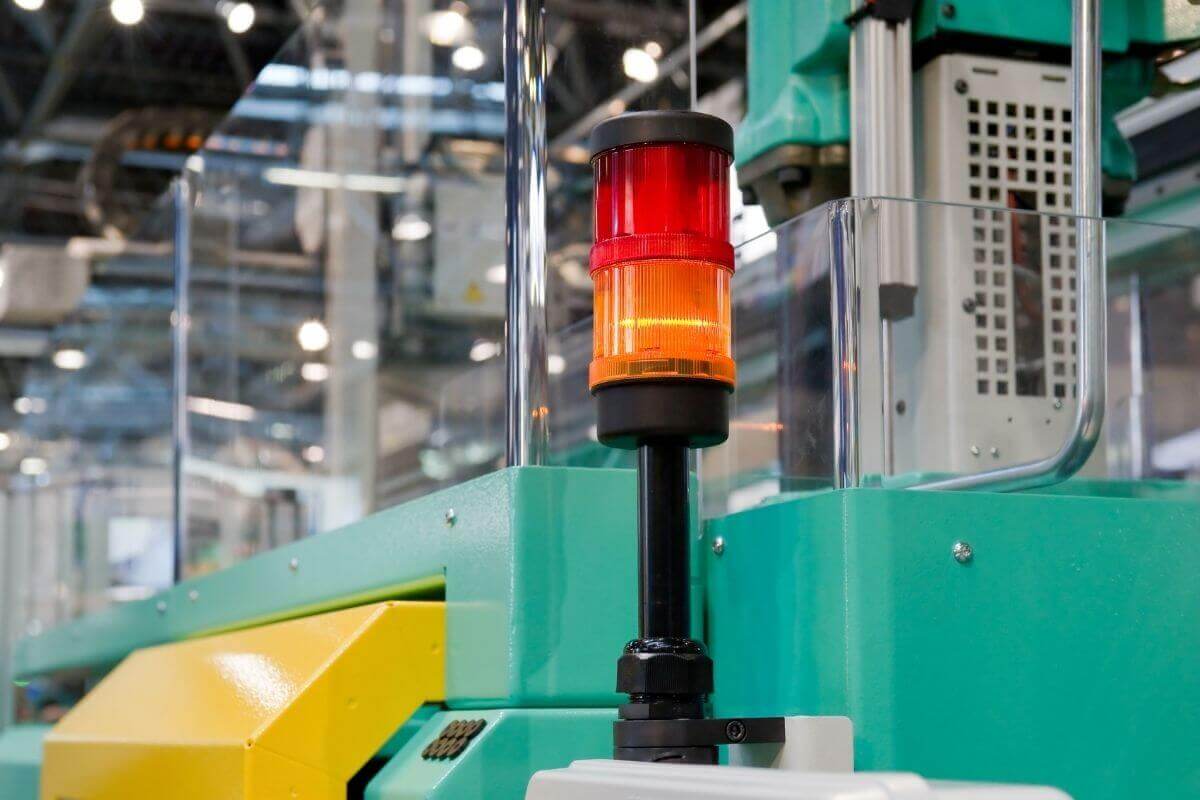Micro-disruptions – How short machine downtimes slow down the productivity of people and machines
Interruptions and machine malfunctions are not uncommon on the shopfloor. Many can be pinpointed and the cause of the problem quickly identified and resolved.
Micro malfunctions, on the other hand, cannot be identified so quickly. Micro malfunctions are regular interruptions of work processes that are not planned, are not recorded or documented by anyone and have to be eliminated manually by the machine operator.
Most of the time, the actual reason for the malfunction is not identified because it is quickly resolved. This may be correct in the short term, but in the long term a lot of time is lost. This lowers production efficiency and leads to a reduction in employee satisfaction and motivation.
Complex and highly automated manufacturing or assembly machines are particularly susceptible to this type of malfunction.
Problems with the documentation of micro disturbances
When a micro malfunction occurs, machine operators are usually only concerned with the short-term elimination of the problem in order to be able to continue working as quickly as possible. The cause of the problem, however, is repeatedly ignored or remains undetected.
Since stationary PCs or even paper are often still used for documentation on most shopfloors, this is often lost or incomplete due to a lack of time. Going to the PC, logging in and making entries delays the actual work process and contradicts the principle of lean production.
However, without this documentation / classification, it cannot be guaranteed that the micro faults that have occurred will be noticed and the cause of the problem will be taken care of.
This creates an efficiency and productivity problem, as machine operators cannot be deployed elsewhere, but must always be within reach of their machines.
How can micro-disturbances be avoided?
In the case of micro malfunctions, one often only knows that there was a problem on the machine, but the specific information and classification are missing. Due to lack of time, they are not recorded.
In order to ensure complete documentation and thus lay the foundation for eliminating the cause of the problem, it must be possible for employees to carry out the documentation and classification of malfunctions quickly and on the move. This does not work with paper and stationary PCs. It is different with smart wearables or smartphones & tablets.
By using smart wearables, for example a smartwatch with the right software, it is possible to quickly and easily classify and record faults directly at the workplace with just a few clicks. Micro faults can be quickly assigned and identified so that the cause can be deduced.
The proverbial “black box” becomes transparent and it is clear where the basic problem lies. It is possible to identify where errors frequently occur, prioritize the elimination of problems and optimize processes accordingly.
Pareto analysis for effective productivity increase
After classifying the faults, prioritizing the tasks correctly is crucial. The pareto analysis can be a helpful support to make good decisions.
A pareto analysis, also known as the 80/20 rule, is used to identify the most common reasons for an impact occurring and then to optimize it at best. The first step is to fix the problems that are responsible for the majority of the productivity loss.
Find out how you can increase productivity on the shopfloor by eliminating micro-disruptions in a free initial consultation – feel free to contact us!
Improve your efficiency on the shopfloor!
Contact us now and receive comprehensive advice.
[hubspot portal=”7001161″ id=”c6455fcf-e396-470a-b110-05dc444a0c98″ type=”form”]
